Of the 26 distinct native iris species in the U.S., I have found northern blueflag (
Iris versicolor) to be particularly versatile. I first obtained this plant for use in a swale that channels runoff from the yard. I had extra plants, so I put them up near the house where I could see how they performed. Needless to say I was thrilled with the performance — not just because of the beautiful flowers, but because the foliage stayed nice and firm through the end of summer.
Northern blueflag is primarily a wetland plant, but it also tolerates soils with average moisture and is cold hardy down to zone 4, making it gardenworthy throughout the Mid Atlantic region, as well as the Northeast and Midwest.
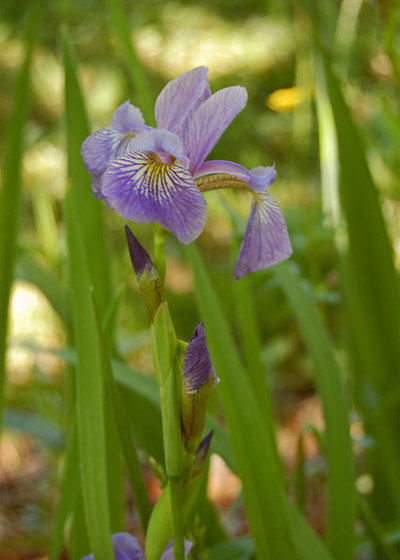 Botanical name: Iris versicolorCommon names:
Botanical name: Iris versicolorCommon names: Blueflag, northern blueflag, harlequin blueflag, large blue iris, liver lily
Origin: The native range is from Newfoundland south to Virginia and west to Illinois and Minnesota, with an isolated population in northern Idaho.
Natural habitat: In nature, blueflag grows in moist to wet meadows, along stream banks, marshes and swamps. It is tolerant of mildly brackish water, and this species is adaptable to soils with average amounts of moisture.
Where it will grow: Hardy to -30 degrees Fahrenheit (USDA zones 4 to 9; find your zone)
Water requirement: Prefers moist to wet soils and can even handle continuous submersion to a depth of about 6 inches; will also grow in soils with average moisture (mesic)
Light requirement: Full to partial sunlight
Caution: The rhizomes, root stalks and cell sap contain toxic substances and should not be touched or ingested. Gloves should be worn when dividing the rhizomes.
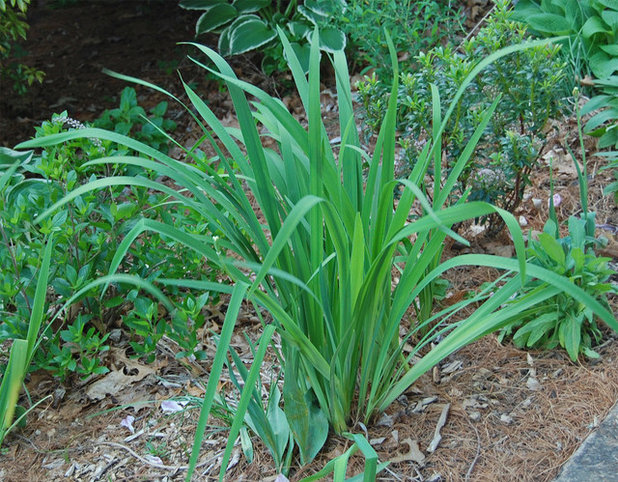 Mature size:
Mature size: 3 to 4 feet tall under preferred growing conditions; in an average garden environment, typically grows to only 2 to 3 feet
Benefits and tolerances: Since blueflag can handle a range of soil conditions, from wet to average, it can be used in many locations in a landscape; its tolerance for being submerged makes it an ideal rain garden plant. As with most irises, deer tend to leave blueflag alone. However, I have seen some browsing on the foliage in early spring. Blueflag and other irises are poisonous to livestock as well as pets.
The clump of iris seen here is growing next to a parking area in average-moisture soil and nearly full sun.
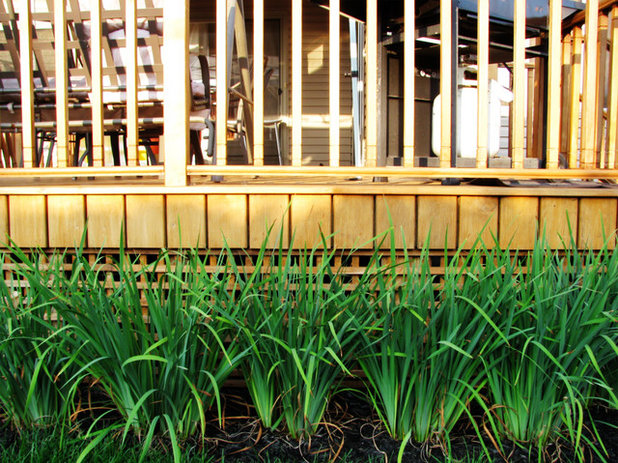
Opaysage
Seasonal interest: Blueflag blooms in late spring (here in inland Maryland, it blooms from mid- to late May into mid-June) The flower color is variable from plant to plant but is typically a shade between pale blue-violet and purple with white and yellow markings on the throat. The relatively broad, blue-green foliage persists from early spring into fall. The gently arching leaves make it blend well with other perennials and shrubs in a garden.
When to plant: Container plants can be planted from spring to fall; fresh divisions of existing plants can be made in early summer as the new root growth begins; divisions can also be made in early spring or in fall as the weather cools (wear gloves to protect your hands from the irritating plant juices); avoid transplanting in hot weather, since the disturbed roots will not be able to keep up with the moisture demands of the plant.
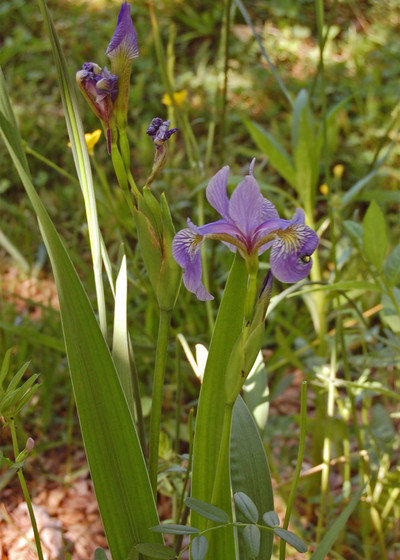 Distinguishing traits.
Distinguishing traits. As with many irises, the flowers have threefold symmetry. Each segment consists of an upright petal, called the standard, and a horizontal or drooping sepal, called the fall. The fall usually has showy white and yellow markings. Each flowering stalk will carry several blooms, which open in sequence. The long, tubular flowers of blueflag are attractive to hummingbirds and bees.
Blueflag’s coloration is variable, hence “
versicolor” in its botanical name, but there are a number of cultivars with distinct coloration. These include:
- ‘Versicle’: All white
- ’Bridesmaid’: With lilac-colored standards and pale yellow falls
- ‘Party Line’: Deep purple and white
- ‘Mysterious Monique’: Intensely colored with distinct purple, white and yellow markings
Shown: This iris is growing in a swale I built to slow the runoff from a large expanse of lawn. It’s near a tulip tree (
Liriodendron tulipifera) and gets about a half day of full sun.
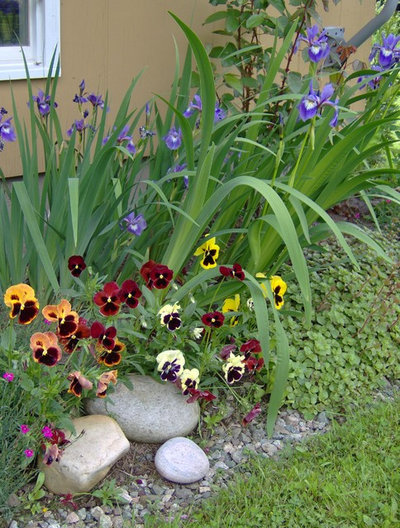
Sherri Fitzgerald - Ultimate Decor
How to use it. While naturally a wetland plant, blueflag will grow well in drier locations. It’s an excellent plant for transition areas between wetlands and uplands. Other plants that naturally grow with blueflag include turtlehead (
Chelone spp), cardinal flower (
Lobelia cardinalis), Allegheny monkey flower (
Mimulus ringens), rose mallow (
Hibiscus moscheutos) and wetland ferns.
Planting combinations are boundless in garden settings. Here you can match the arching, strap-like foliage with other leaf textures. While it’s far from natural, I have a setting with the iris and tulips (definitely dry-land plants) growing side by side.
Planting notes. Blueflag grows from underground stems called rhizomes and should be planted shallowly, about ½ to ¾ inch below the soil surface. The rhizomes, root stalks and cell sap contain toxic substances and should not be touched or ingested. Gloves should be worn when dividing the rhizomes.
Shown: Here is an example of successfully using blueflag outside its native habitat. It’s planted here with Dragon’s Blood stonecrop (
Sedum spurium ‘Dragon’s Blood’) and pansies (
Viola sp).
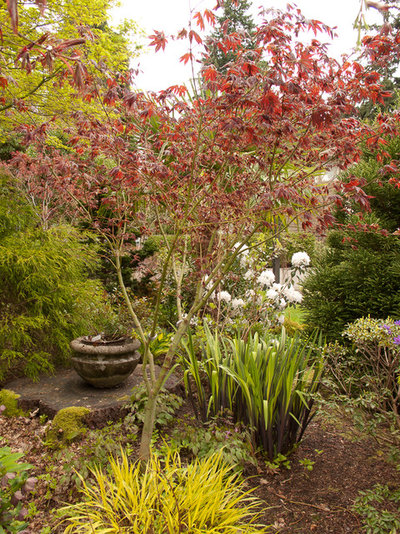
Le jardinet
Northern blueflag is available from many native-plant nurseries and online native-plant retailers. From Virginia south, southern blueflag (
Iris virginica) is the more commonly seen species. The name blueflag is often used equally for these two species.
This photo shows a hybrid of northern and southern blueflag,
Iris x
robusta,
in a garden. While the flowers of the two species are very similar, the new growth of the southern species has a reddish tinge that persists at the base of the plant.
See more of this spring garden combination





